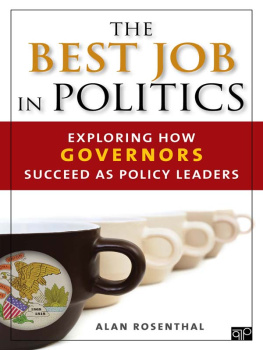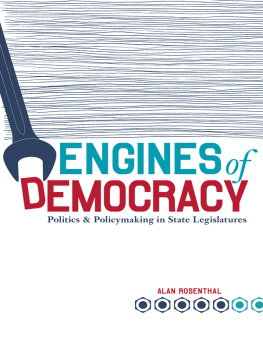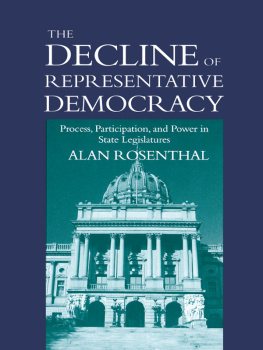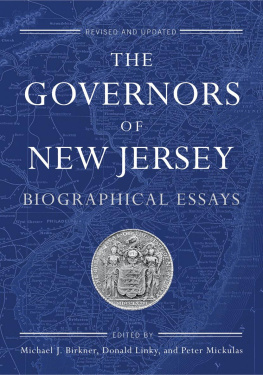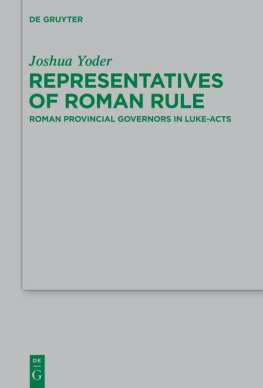For information:
CQ Press
An Imprint of SAGE Publications, Inc.
2455 Teller Road
Thousand Oaks, California 91320
E-mail:
SAGE Publications Ltd.
1 Olivers Yard
55 City Road
London, EC1Y 1SP
United Kingdom
SAGE Publications India Pvt. Ltd.
B 1/I 1 Mohan Cooperative Industrial Area
Mathura Road, New Delhi 110 044
India
SAGE Publications Asia-Pacific Pte. Ltd.
33 Pekin Street #02-01
Far East Square
Singapore 048763
Acquisitions Editor: Charisse Kiino
Production Editor: Elizabeth Kline
Copy Editor: Amy Marks
Typesetter: C&M Digitals (P) Ltd
Proofreader: Lawrence Baker
Indexer: Jean Casalegno
Cover Designer: Paula Goldstein, Blue Bungalow Design
Marketing Manager: Jonathan Mason
Copyright 2013 by CQ Press, an Imprint of SAGE Publications, Inc. CQ Press is a registered trademark of Congressional Quarterly Inc.
All rights reserved. No part of this book may be reproduced or utilized in any form or by any means, electronic or mechanical, including photocopying, recording, or by any information storage and retrieval system, without permission in writing from the publisher.
Printed in the United States of America
Library of Congress Cataloging-in-Publication Data
Rosenthal, Alan
The best job in politics: exploring how governors succeed as policy leaders/Alan Rosenthal.
p.cm.
Includes bibliographical references.
ISBN 978-1-4522-3999-6 (alk. paper)
1. GovernorsUnited States. 2. GovernorsUnited StatesPowers and duties. 3. GovernorsUnited StatesHistory20th century. 4. GovernorsUnited StatesHistory21st century. 5. Political leadershipUnited StatesStates. I. Title.
JK2447.R67 2012
352.232130973dc23 2011051917
This book is printed on acid-free paper.
12 13 14 15 16 10 9 8 7 6 5 4 3 2 1
About the Author
Alan Rosenthal is professor of public policy and political science at the Eagleton Institute of Politics at Rutgers University.
He has addressed and/or consulted with legislatures in more than two-thirds of the states and has worked with the National Conference of State Legislatures (NCSL), the Council of State Governments (CSG), the State Legislative Leaders Foundation (SLLF), and the National Governors Association on various activities and projects. In 2006, he was given an award for lifetime achievement from NCSL and SSLF.
In his home state, New Jersey, he chaired the Ad Hoc Commission on Legislative Ethics and Campaign Finance, which in 1990 was appointed by the Speaker of the Assembly and the President of the Senate. In 1992 and 2001 he was selected to chair the New Jersey Congressional Redistricting Commission. In 2011 he was chosen by the Chief Justice of the New Jersey Supreme Court to serve as the eleventh (tiebreaker) member of the State Legislative Apportionment Commission. In 1993 he received the Governors award for Public Service in New Jersey. He currently chairs the Joint Legislative Committee on Ethical Standards, a committee of the New Jersey Legislature.
He has written extensively on state legislatures and state politics. His books include: The Third House: Lobbyists and Lobbying in the States (Revised ed., 2001); Drawing the Line: Legislative Ethics in the States (1996); The Decline of Representative Democracy (1998); Republic on Trial, with Burdette Loomis, John Hibbing, and Karl Kurtz (2003); Heavy Lifting: The Job of the American Legislature (2004); and Engines of Democracy: Politics and Policymaking in State Legislatures (2009). In recognition of the contribution his published work and career has made to the art of government through the application of social science research, he was given a lifetime-achievement award by the American Political Science Association.
Contents
Preface
I have spent practically my entire career observing state legislatureswriting about them, consulting with them, and teaching students and legislators themselves about these remarkable institutions. One of the major functions of the legislature, in my judgment, is balancing the power of the executive. Although I had touched on the subject of why legislatures find this function difficult to perform, I thought it worthwhile to explore the subject further and from the perspective of the governor rather than that of the legislature. Thus, this book is about governors and, in particular, about governors exercising policy leadership in their states. In the research and writing of this book, I have come to appreciate the institutional challenges that the legislature faces in trying to be a coequal branch and balance the governor.
My friends who serve in and work for legislatures tease me for having deserted them and gone over to what they call the dark side. Governors and their policy leadership may indeed be the dark side, but not in the Star Wars sense my friends had in mind. Whereas many of my colleagues in political science have shed bright analytical light on legislatures, only a hardy few of them have taken on the study of governors, who have been left pretty much in the dark. We may know about individual governors in our own states, but we know relatively little about the species. Governors rarely receive any attention outside of their own states and beyond their terms of office unless they run for president or are accused of misbehavior in office. Yet, state by state, governors have the most significant, as well as the best, job in politics. They are the driving force behind the major public policies that are enacted by their legislatures. This is not to downplay the importance of legislatures, courts, political parties, and interest groups, all of whom play a vital part in the policy processes. It is, however, to acknowledge the central role of the executive.
This book, then, is intended to offer students of state politics and policymaking, as well as legislators and other participants in lawmaking, a better idea of how and how well policy leadership by governors works. It covers what I refer to as the contemporary generation of governorsthose who have served in the fifty states over the past thirty years. It is written from the perspective of governors, including those I interviewed, those I surveyed, and those whose memoirs and biographies I read. I admit to more than my fair share of hubris in attempting to understand and generalize about how and why governors succeed as policy leaders.
As with my work on legislatures, I bring to this study of governors a great respect for state political institutions and the people who make representative democracy work. I am especially indebted to those former governors who responded to the questions I asked on a mail survey or in face-to-face or telephone interviews. I am also grateful to the National Governors Association for its assistance in soliciting cooperation from several hundred former governors throughout the states. Ray Scheppach, who was NGAs executive director at the time I undertook this study, Barry Van Lare, a former deputy director, and Nikki Guilford, who is director of the NGAs Office of Management Consulting and Training, were enormously helpful.
At Rutgers, Marc Weiner and Orin Puniello of the Survey Research Center at the Bloustein School provided invaluable assistance. They collected and analyzed data and gave me counsel and encouragement (something they repeated when we teamed up later on as the eleventh member of the New Jersey State Redistricting Commission). At the Eagleton Institute of Politics, which for many years has indulged my legislative proclivities, a newly created Center on the American Governor undertook oral histories of New Jerseys governors, beginning with Brendan Byrne and Tom Kean. The archived interviews provided useful grist for my gubernatorial mill and the attention the Institute lavished on governors furnished the ideal atmosphere in which to think and write about them.

